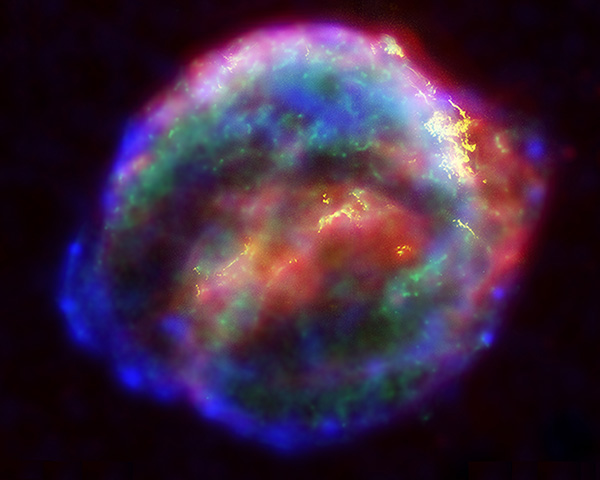
by Mary Caperton Morton Tuesday, December 27, 2016

Multiwavelength X-ray, infrared, and optical compilation image of Kepler's supernova remnant, SN 1604. Credit: NASA.
When a massive star comes to the end of its life cycle, it goes out with a spectacular bang known as a supernova. Only three of these events have been observed in the Milky Way in the past 1,000 years. Evidence for older explosions can be detected in the form of rare elements found on Earth that are only produced by such explosions.
Supernovas are classified based on their emissions spectra and rates of expansion as they explode outward. Type-II supernovas are known for being one of the main generators of rare heavy elements, a process known as stellar nucleosynthesis. One of these rare elements is iron-60, a radioisotope that is only made during type-II supernova explosions. Detection of this isotope on Earth is evidence for a past supernova explosion.
In a recent study, published in Proceedings of the National Academy of Sciences, a team led by Peter Ludwig of the Technical University of Munich in Germany found five atoms of iron-60 in two sediment cores extracted from under the Pacific Ocean. The atoms were locked in magnetofossils: fossilized chains of magnetite crystals produced by magnetotactic bacteria.
Using accelerator mass spectrometry, the team dated the iron-60 atoms to a peak interval about 2.2 million years ago, indicating that a supernova explosion may have occurred somewhere in the Milky Way in the Early Pleistocene. The find adds another event to the short list of known supernova explosions in the history of our galaxy.
© 2008-2021. All rights reserved. Any copying, redistribution or retransmission of any of the contents of this service without the expressed written permission of the American Geosciences Institute is expressly prohibited. Click here for all copyright requests.